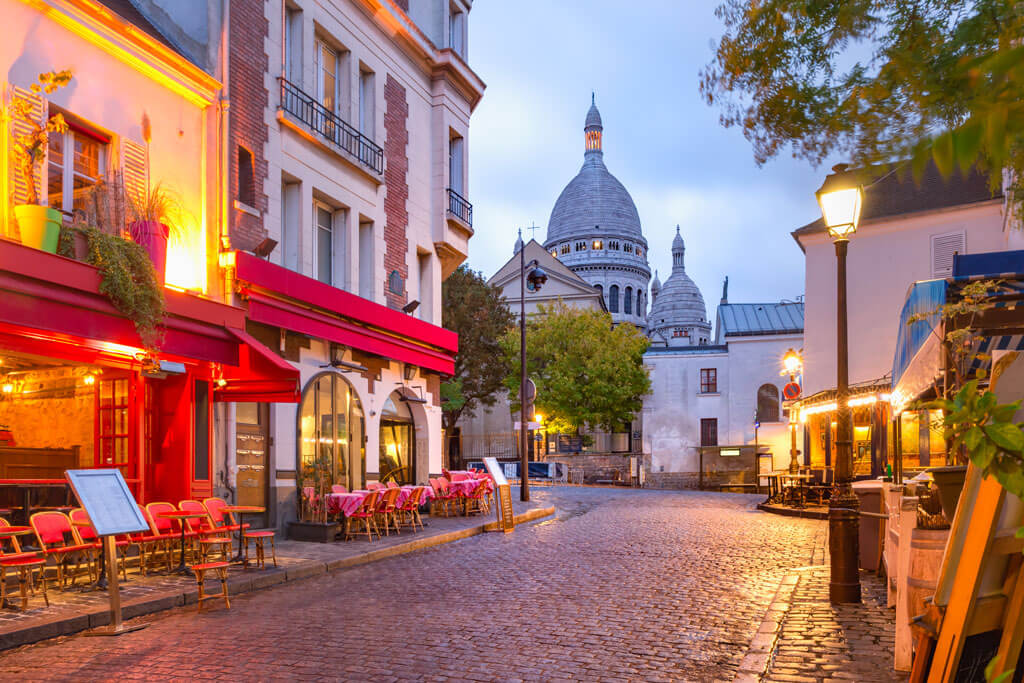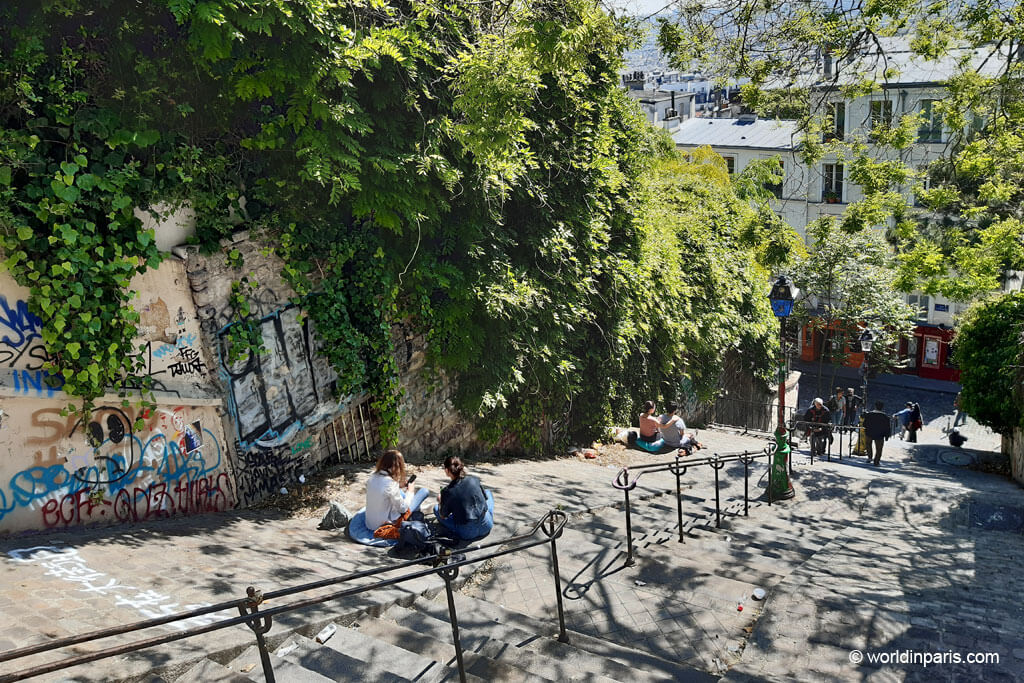History, Fun Facts, and Things to Know Before Visiting the Sacré-Coeur in Montmartre
The Sacré-Coeur (meaning “Sacred Heart” in French) is one of the most famous buildings in Paris. It is located on the top of the hill of Montmartre, in the 18th Arrondissement.
The impressive Sacré Coeur Basilica was built between 1873 and 1924 and is dedicated to Christ’s Sacred Heart. Today, the Sacré Coeur welcomes more than 10 million visitors annually, making it the second most visited religious building in France, only after Notre Dame Cathedral.
Go on reading for the most interesting facts about the Sacré Coeur, Paris.
Are You Planning a Trip to Paris Last Minute?
If you are booking a last-minute trip to Paris, I’ve got you covered! Below are our guides, top tours, hotels, and more:
» Plan: Paris Travel Planner; Paris Arrondissements Guide; Check out the best Paris Metro tickets for tourists
» Book your flight tickets with Omio; book your train tickets with Omio
Book your transfer from the airport to the city with Welcome Pickups.
» Where to Stay: Best Districts to Stay in Paris
- Le Pavillon de la Reine (historical 5-star hotel in Le Marais)
- Hotel La Comtesse (mid-range hotel with Eiffel Tower view from all the rooms!)
- Hotel Ducs de Bourgogne (super central 4-star hotel near the Louvre)
» Top-Rated Paris Tours & Tickets:
- Louvre Museum Skip-the-Line Ticket
- Eiffel Tower Summit Access Ticket
- Seine River Night Cruise
- Château de Versailles and Gardens
- Catacombs Skip-the-line tour with VIP access to restricted areas
Want skip-the-line access at museums & attractions in Paris? Get your hands on a Paris Museum Pass!
» Don’t leave without travel insurance! SafetyWing Essential plan works well for long and short trips (from 5 days up). Can also cover electronics theft through their add-on.
Table of Contents:
- Sacré Coeur Hours and Admission Conditions
- The Sacré Coeur Inside
- Quirky and Interesting Facts about the Sacré Coeur, Paris
- What to Do Near Sacré Coeur in Montmatre?
The Sacré Coeur in Montmartre is one of the top things to see in Paris. I recommend visiting Sacré Coeur Basilica in the following Paris itineraries:
Sacré Coeur Hours and Admission Conditions
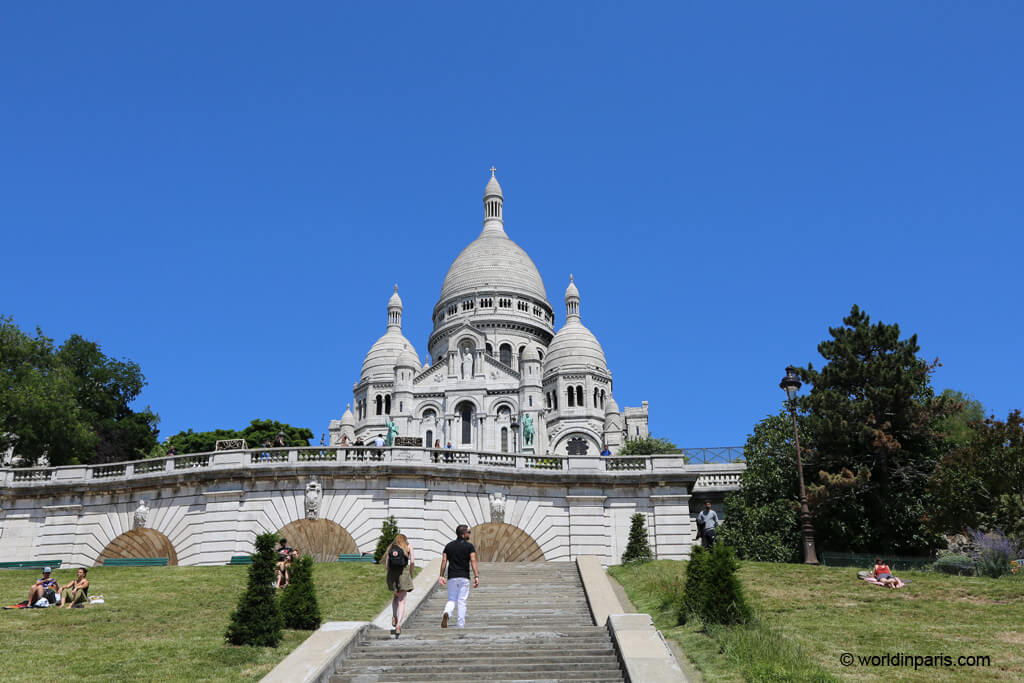
Can you go inside Sacré Coeur? YES.
Is Sacré Coeur free to visit? YES, except for the access to the dome, which costs 8€ (adults).
Is Sacré Coeur worth visiting? With its original architecture and rich decoration inside, Sacré Coeur is one of the main highlights of any visit to Montmartre. The view from Sacré Coeur is also amazing.
The Sacré Coeur hours are 6:30 a.m. to 10:45 p.m. Guided visits are not allowed inside Sacré Coeur as a sign of respect for Christ and those who want to pray in peace.
The hours to climb up to the Sacré Coeur Dome are 10:00 a.m. to 5:30 p.m. (last entrance at 5:00 p.m.)
Currently, the Sacré Coeur Crypt is closed to visitors.
Also in Montmartre
The Sacré Coeur Inside
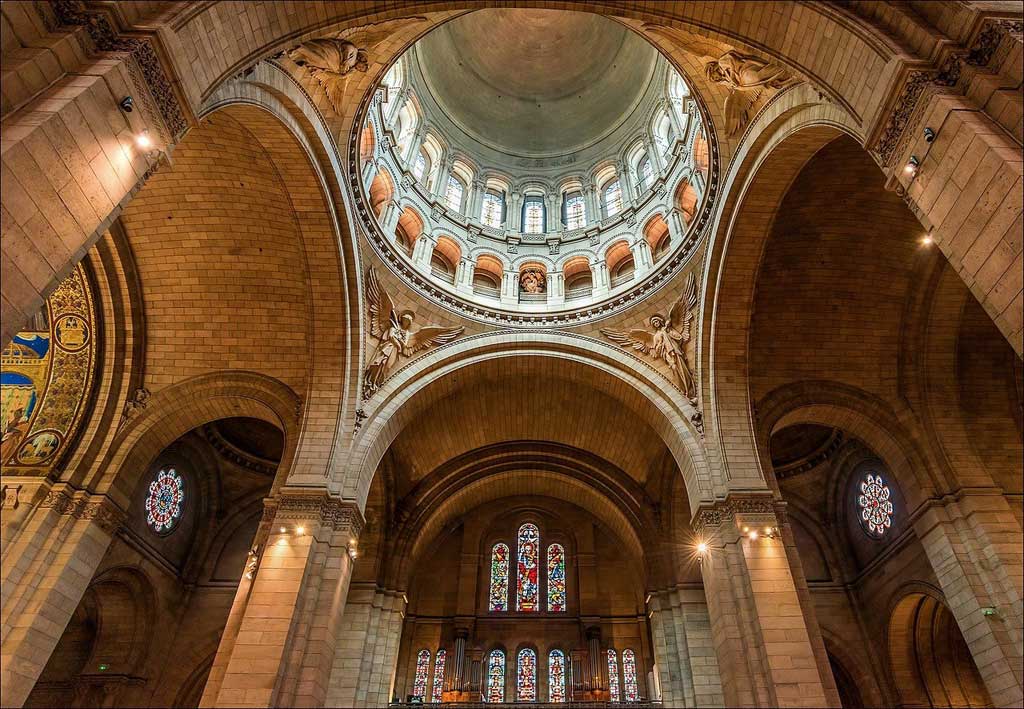
The Sacré Coeur Basilica is built in Romano-Byzantine style, with a design inspired by models such as Saint Sophia in Constantinople or San Marco in Venice.
The Sacré Coeur architecture is in the shape of a Greek cross with four domes. It is 85 meters long and 35 meters wide. You will love the light and details of this majestic place!
The Sacré Coeur interior is magnificent. When you visit the Sacré-Coeur inside, you will see that all the light and architectural details draw attention to the choir, the place of liturgical celebrations, and the adoration of the Sacred Heart.
The Sacré-Coeur Dome is 83 meters high and accessible by 300 steps (no elevator here). Climbing the Sacré Coeur Dome is one of the top things to do in Montmartre, and the view from the top is stunning! The access to the Dome is outside the Basilica, on the left.
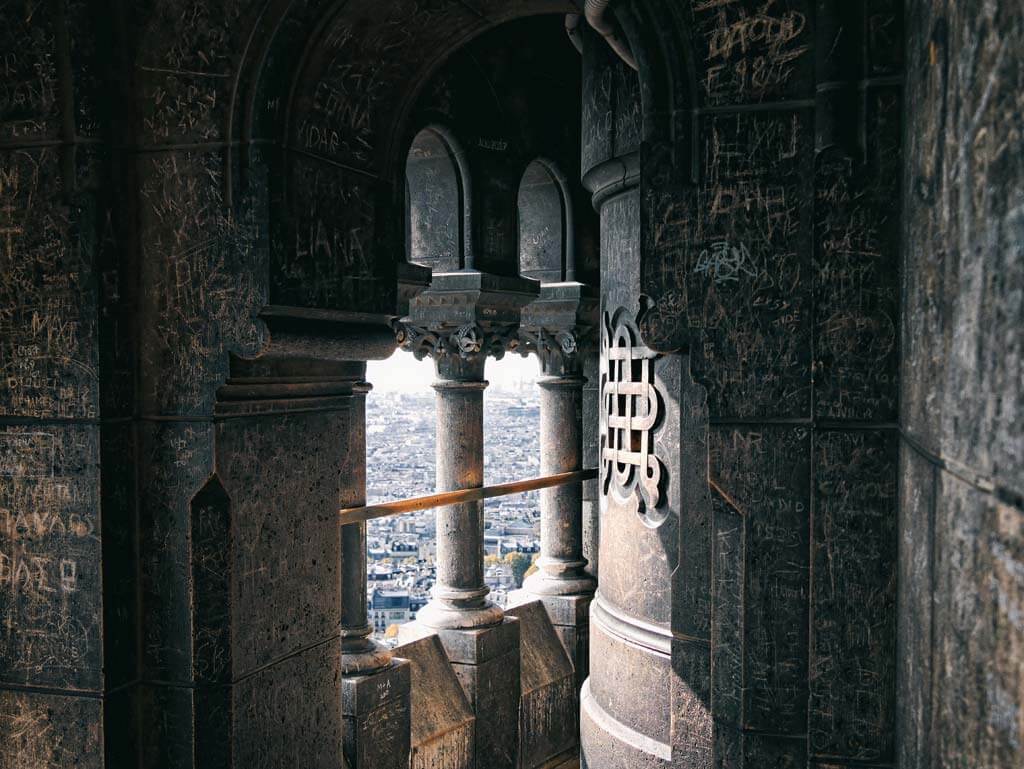
The entrance to visit the Sacré-Coeur Crypt is also on the left side. This place has the same plan as the Basilica, and it is a real curiosity. An impressive statue of the Virgin is located in the central chapel called the Chapel of the Pietà. No less than 14 side chapels are also to be discovered.
Here, you will see the Basilica’s very first stone, tombs linked to characters who have marked the place’s history, and numerous statues.
Quirky and Interesting Facts About the Sacré-Coeur, Paris
In addition to its spectacular location and imposing architecture, here are some interesting facts about the Sacré-Coeur Paris.
1. It Started with a Vision
In 1870, the people of Paris were under siege after the defeat of Napoleon III against Sedan. The Parisians were starving to the point of killing the animals in the Ménagerie (the zoo in Paris) for food. After the defeat, the surrender of Napoleon III and the bloody episode of the Paris Commune followed, with more than 30,000 people killed.
Catholics saw these terrible events as a punishment from God. The faithful started to meet and organize huge processions, promising to erect a monument to the glory of the Sacred Heart of Jesus.
The Archbishop of Paris, Monsignor Guibert, wrote to the Minister of Worship asking him to support this project, which would contribute to the divine protection of the French capital. For the protection to be effective and visible to all, the City decided to build the monument on a hill.
The decision on the Sacré-Coeur location was the result of a vision. It is said that in October 1872, the Archbishop of Paris had a vision while climbing the Montmartre steps and decided that there, “where the martyrs are” (this is the meaning of “Montmartre”), was the perfect place for the Sacré Coeur Basilica.
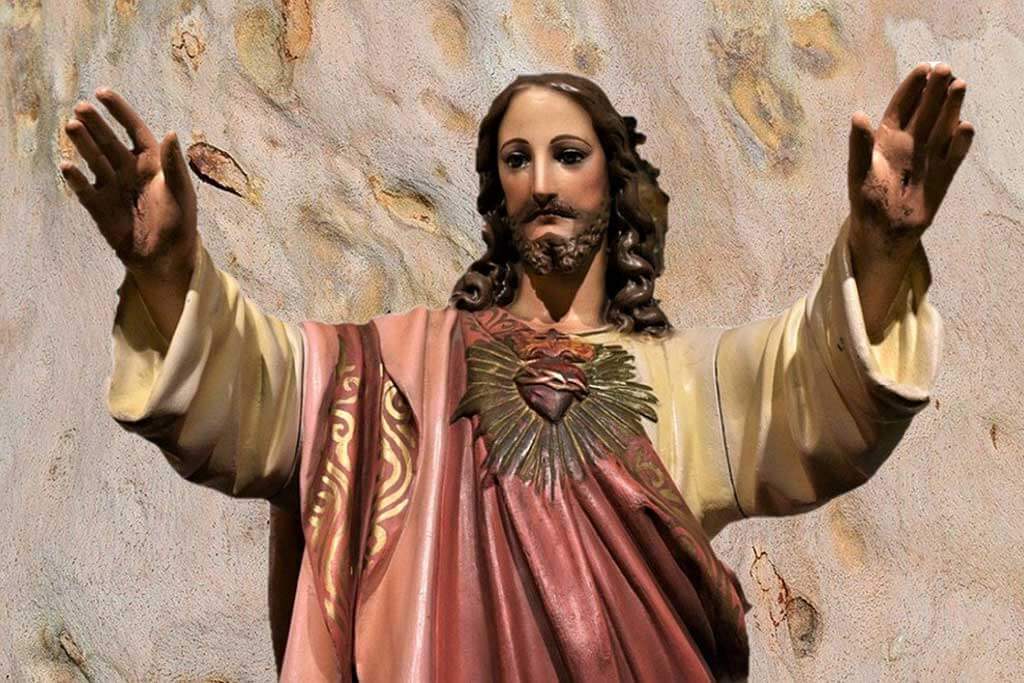
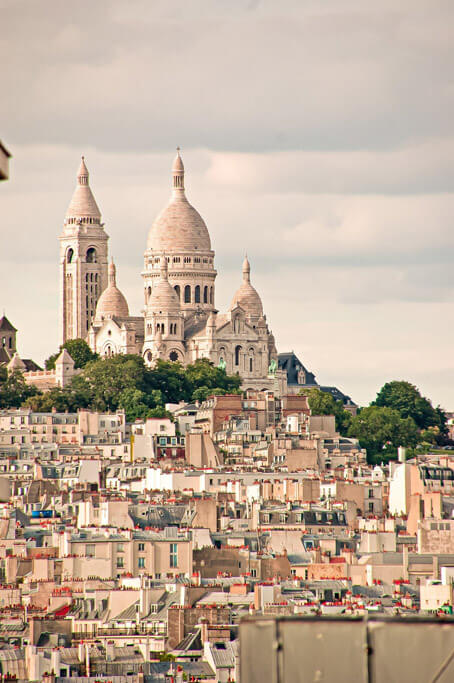
2. The Sacré-Coeur Location is Doubly Symbolic
The choice of the Sacré Coeur location is doubly symbolic. Located on the top of the Butte of Montmartre, one of the highest points of Paris, the temple would thus be visible to all.
The other reason is political. It was indeed at the top of the Butte that the Paris Commune began in March 1871. This was a way for the Church to reaffirm its power and atone for sins …

3. Druids, Romans … Also Prayed on this Site
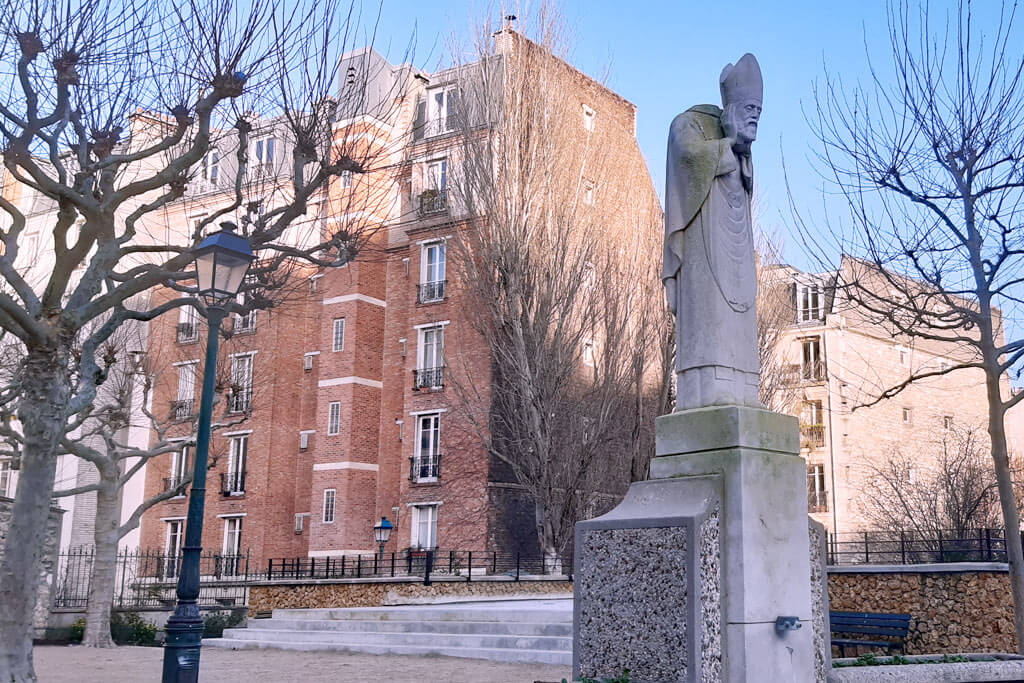
The Sacré-Coeur in Montmartre was not the first sanctuary on this hill overlooking Paris. Thousands of years before, the Druids prayed there, and later in the 5th century, the Romans built a temple to Mars on the site of the current Saint-Pierre Church.
Montmartre (literally “mountain of martyrs”) was named after St. Denis (the patron saint of Paris), who was beheaded there with his companions Rustique and Éleuthère during Emperor Valerian’s prosecutions. But — martyr that he was — the loss of his head didn’t stop him! He simply picked it up and walked out of town.
4. The Construction of the Sacré Coeur in Montmartre was not Simple!

To decide on the choice of architect, a competition was organized under the chairmanship of Charles Garnier, the architect of the Opéra Garnier. He chose Paul Abadie, who proposed a building inspired by the great Mosque of Istanbul, Hagia Sophia.
Construction began in 1875. Soon, the workers realized the fragility of the soil of Montmartre, which is formed by quarries. Abadie had to consolidate these soils before considering the construction of the basilica.
5. Seven Architects were Necessary to Finish the Project
The first stone of the Sacré-Coeur was laid on 16 June 1875, but the work only ended in 1924! Paul Abadie died in 1884 and was replaced by Honoré Daumet, who died in 1886. Death after death, architects followed one another … until 1923.
Seven architects participated in the construction of the Sacré-Coeur Basilica, including Charles Garnier, who was a consultant architect.
6. The Secret of Sacré-Coeur’s Eternal Youth
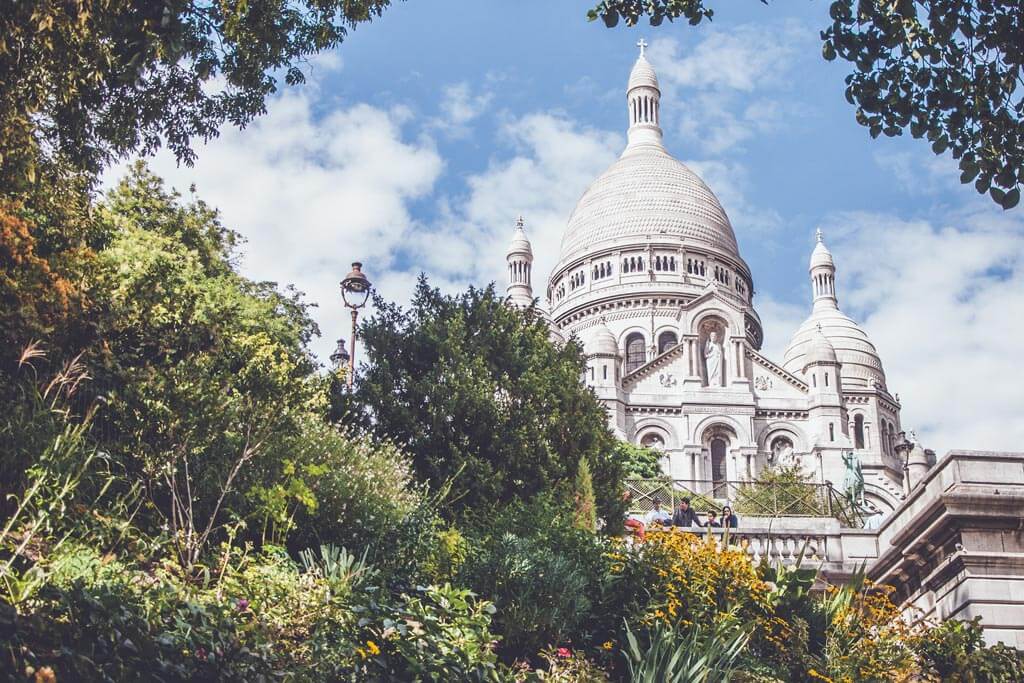
One of the most curious facts about Sacré Coeur is its characteristic white color. While most of the monuments of Paris tend to darken over time and are constantly subject to renovations, the Basilique du Sacré-Coeur remains unpolluted. How can Montmartre’s symbol stay so white?
The Sacré Coeur was built with the stone of Château-Landon (a town near Paris), which was also used to construct the Alexandre iii Bridge and the Arc de Triomphe. This stone has a very interesting characteristic: when it is exposed to rainwater, the cullet, a thin protective layer that naturally coats the stone, secretes a white substance that hardens in the sun. Therefore, each rain is an occasion for the Basilica to clean up!
7. The Sacré-Coeur Basilica was Financed by the Parisians
To carry out this expensive project, the City called for donations. The Parisians financed the Sacré-Coeur by buying 1 to 3 stones, the prices of which varied between 120 and 500 francs. The names of the people who invested in the construction of the Sacré Coeur are engraved all over the walls.
8. The Sacré-Coeur is the Second Highest Point in the City
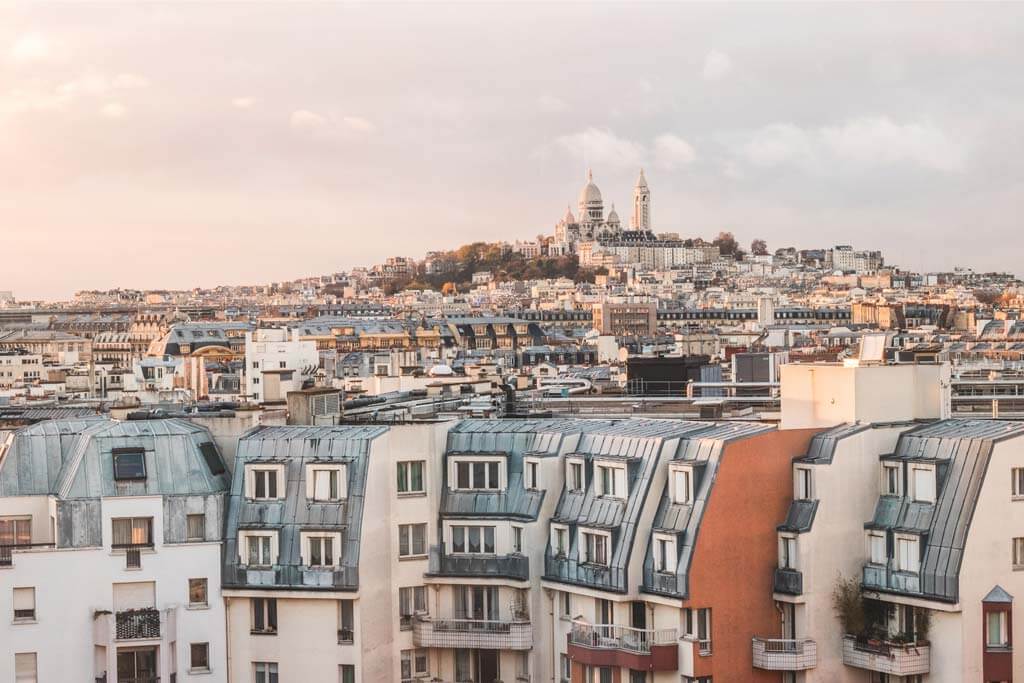
The Sacré-Coeur is the second-highest point of the City, right after the Eiffel Tower. This is because it was built on top of Montmartre Hill at a height of 130 meters.
The Sacré-Coeur Dome and the Bell Tower are 91 meters tall, so the total height of the Sacré-Coeur is 221 meters above sea level. The Eiffel Tower is 300 meters tall, and the Montparnasse Tower (210 meters) takes third place on this list.
There are 270 steps to Sacré Coeur, but the climb is worth it. At the end of the Sacré Coeur steps, you will be rewarded with a breathtaking panoramic view of Paris. Fortunately, since 1901, the Sacré-Coeur funicular has provided easier access to the Basilica.
9. There was a Stellar Fight on the Sacré-Coeur Steps…
The 270 steps to Sacré-Coeur were featured in the climactic sequence in “John Wick: Chapter 4.” The climb of the Sacré-Coeur steps comes close to the end of the film and after a flurry of ingenious and relentless fights that feature John Wick (Keanu Reeves) running around Paris trying to avoid killers who want to collect the price that’s on his head.
John Wick needs to get to the Sacré-Coeur in Montmartre by sunrise to compete in a duel with an evil marquis (Bill Skarsgard) that will decide his fate. In the bravura action sequence, John Wick has to defeat a gantlet of enemies to reach the top of the Sacré-Coeur steps. When it finally seems like he’s made it to the summit, he’s sent plummeting back to the bottom in full slapstick fashion and has to start from scratch while the clock is ticking.
Truth be told, the Sacré Coeur steps shown in the film are not the real steps to Sacré Coeur because they didn’t look that terrifying to the director and his crew. The “Sacré-Coeur steps” used for the film are not far from the Basilica, on the left side.
10. The Sacré Coeur Basilica Holds Two Records
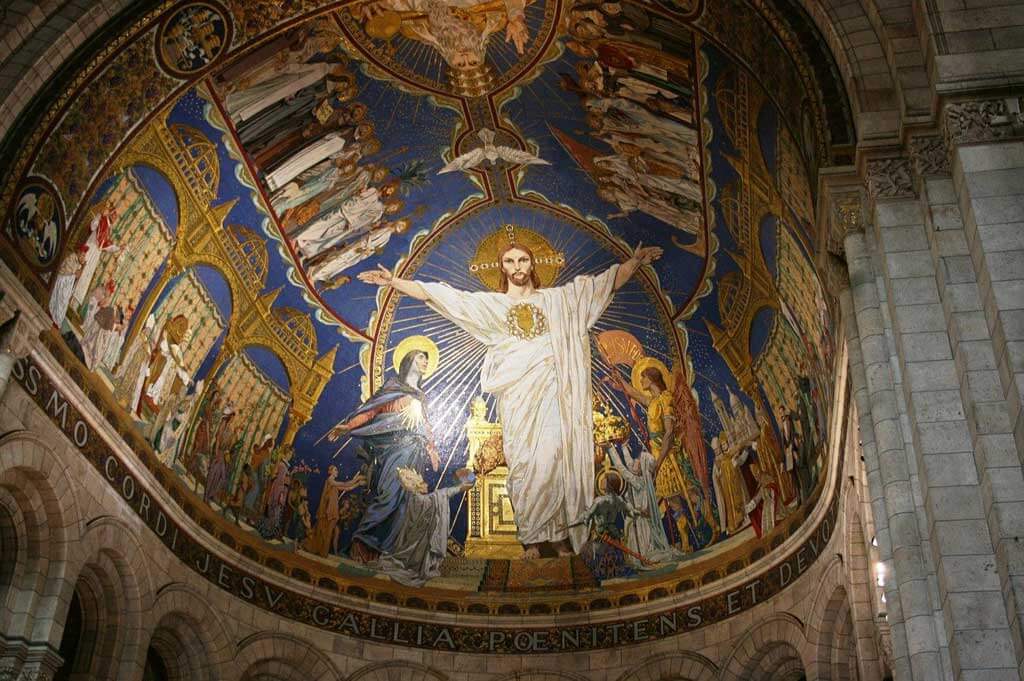
With its colossal dimensions, you can imagine that the Sacré-Coeur Basilica must hold some records. But do you know which ones?
The Sacré-Coeur interior is dominated by a 475 m2 mosaic that extends over the apse’s ceiling. This work, representing the Sacred Heart of Jesus Christ, is the largest mosaic in France and one of the largest in the world.
The second record is for the largest bell in France: 3 meters in diameter, 9.60 meters in outer circumference, and nearly 19 tonnes! Nicknamed La Savoyarde, its original name is Françoise Marguerite of the Sacred Heart of Jesus. Its arrival in the Basilica required a team of 28 horses!
11. Since 1885, the Sacré-Coeur Hosts an Uninterrupted Prayer
Since 1885, the faithful have taken turns day and night for uninterrupted prayer. Every evening, after the Basilica’s doors close at 10:30 p.m., the prayer relay continues, ensured by persons registered for the night of adoration.
The participants are installed in a dormitory or bedroom at the Ephrem Guest House, which is located at the rear of the Basilica. During the night, they choose the time they want to pray (one hour or more), ensuring a continuous prayer relay.
12. The View from Sacré Coeur’s Dome is One of the Best Views Of Paris
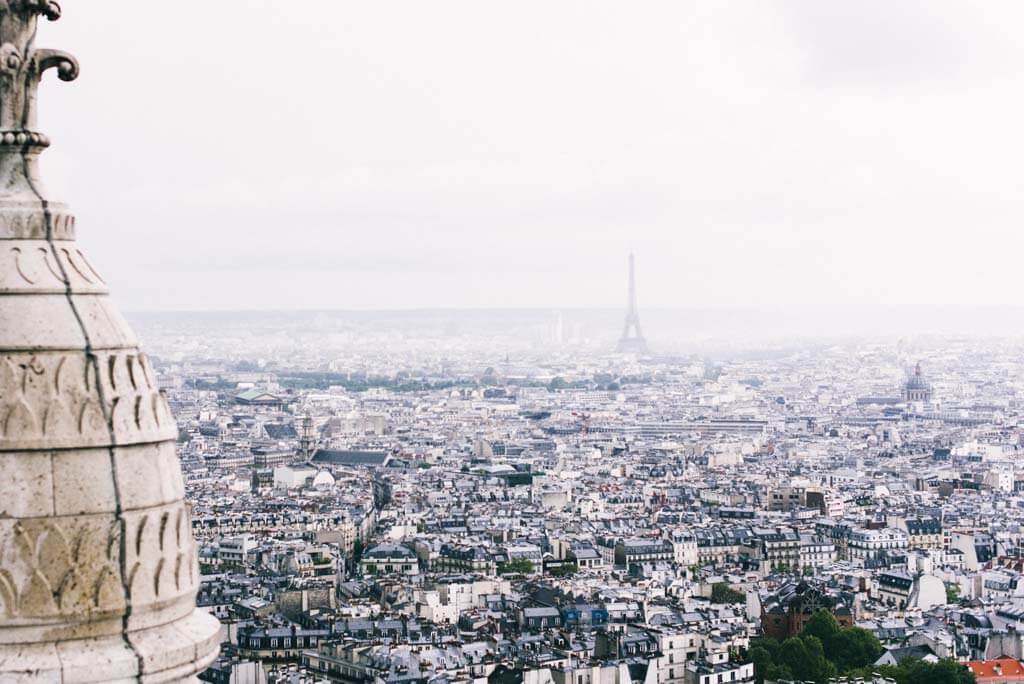
The view from Sacré-Coeur’s Dome is one of the best views of Paris: Notre Dame, the Eiffel Tower, the Panthéon, the Opéra Garnier, Tour Montparnasse, and the Centre Pompidou.
At 83 meters high, the Sacré-Coeur Dome was the highest point in Paris … until the construction of the Eiffel Tower.
The entrance to the Dome is on the left side of the Basilica. It’s an authentic experience that comes after climbing 300 steps!
What to Do Near Sacré-Coeur in Montmartre?
- Place du Tertre
- Musée de Montmartre
- Musée Dalí
- Moulin Rouge Cabaret
- The Love Wall

